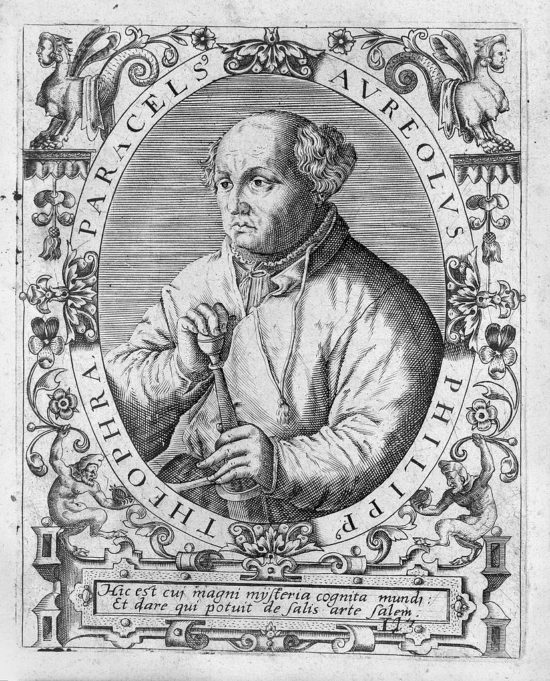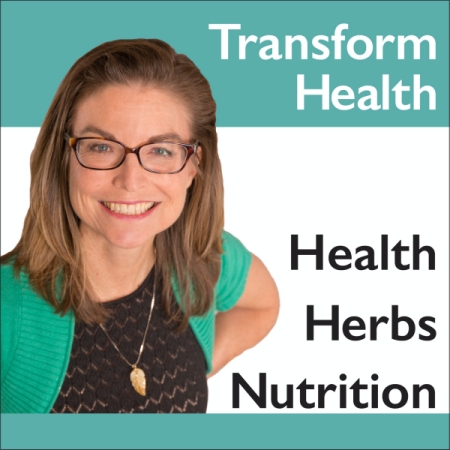A Swiss-born physician and alchemist* named Paracelsus may have used homeopathy before Hanhemann, around 1530A.D. Born in 1493, his true name was Theophrastus von Hohenheim. His family moved to Austria, where he was trained in school to be an analyst of many mined metals, which gave him metallurgical experience.3 I find his life to be similar to Hanhemann’s because of his rejection of established theories and higher learning, in favor of new theories, learning from everyone, and what worked to heal people.
A doctor, like his father, he was very well educated. He studied chemistry, theology, humanity, medicine, and magic [also astrology and alchemy*]. He “saw each of these as united to and vitally enriched by the others. He understood human beings as a “microcosm, a condensation of the entire universe.” Exploring the human body and what plagued or healed it was a means of exploring all of creation, even the supernatural realm.”2
He was dissatisfied with traditional education, and traveled widely, learning from everyone, even barbers and inn-keepers.3
He really did do scientific and medical research, and even people who disliked him admitted that he had healed difficult cases.
He believed that the body would heal wounds on its own if they were kept drained and clean of all debris. (Other doctors were amputating gangrenous limbs, or cauterizing wounds by pouring (painful) boiling oil on them.1)
He developed new ideas about medicine preparation, including chemical compounds (zinc for the first recorded time, mercury), and diagnosed pulse and urine. 4 (He described and named zinc.1)
He did treat people with internally-taken mercury, but the amounts were “carefully measured doses.” He treated these conditions: syphilis, ulcers, leprosy and gout. 1, 4
He spoke German natively, and lectured in this language to anyone, instead of using doctors’ Latin and invite-only lectures.4
He was the first discoverer of magnetic healing called mesmerism, later discovered by Mesmer.1 He used “concentrated mental energy” (energy medicine) to enhance the functions of sick people’s body systems. (He warned others to be careful to avoid mental sorcery.)1
How He Relates to Homeopathy:

There is even evidence that he practiced homeopathy, energetic medicine, and advised healthy food and environment. The Encyclopedia Britannica claims that he was the first to teach that “what makes a man ill also cures him” when given in small doses:
“Paracelsus is said to have cured many persons in the plague-stricken town of Stertzing in the summer of 1534 by administering orally a pill made of bread containing a minute amount of the patient’s excreta he had removed on a needle point.”3
He rejected the famous Four Humors Theory^ from the famous doctor Galen, and burned famed doctor Avicenna’s medical book in the public square. 4 (Remind you of another non-conforming man?) Instead, he focused his disease theories on four external causes (not spirits) that sound a lot like homeopathy’s guide to live in healthy, dry places, and not over-indulge:
1) Cosmic Influences, including climate and geography
2) Toxic Substances, including environmental poisons, contagious disease, infections, poor diet
3) Defective Physical or Mental Constitution
4) Afflictions Sent by Providence (God)4
He theorized that some diseases were caused by external sources of ingested or inhaled toxic elements, a radical idea because previous theories involved demonic spirits.4 Gout, rheumatism, dropsy were treated as an excess of harmful substances in the body. Poisons were expelled, in the hope of returning all organs’ full vital functions. 4
“He stated that the “miners’ disease” (silicosis) resulted from inhaling metal vapours [sic] and was not a punishment for sin administered by mountain spirits.”3 He advised the kind treatment of those mentally ill, believing them sick, not possessed.4
He believed mind and body were one: “He practiced holism, believing that mind and body affected the other,”1 and that “many symptoms and diseases had psychological causes.”4
Paracelsus described magic, energy, light and the vital body that parallels the remedies’ energetic medicine and the vital force:
“He believed in a universal, natural magic that was bestowed on all things by God and that was manifested in physicians as healing ability. All things in nature served a good purpose…”1
He believed that “all things live in and radiate light that is different from ordinary light—it is the vitalizing force of the universe that creates health and well-being. Invisible light carries wisdom, and visible light, the light of Nature, nourishes the body.”1
“Paracelsus believed the Hermetic principle that man has a vital body, an etheric double created and energized by the vital life force of the universe, and that when the vital body is depleted, physical ailment results. Paracelsus said the vital body could be reenergized by bringing it into contact with another vital body that had an overabundance of the vital life force.”1
In alchemy, Paracelsus regarded metal transmutation as secondary to the real, spiritual purpose of the art, especially as it pertained to medicine and healing.”
During his time magic/alchemy and science were joined, and this quote describes the goal of balance:
“Like most alchemists and physicians of his time, Paracelsus…held that sickness and wellness are controlled by astral influences. The key to curing illness was secret remedies that restored the celestial harmony between the inner astrum, or star within man, and a heavenly astrum. The remedies were physical, but their healing components were spiritual.” 1[Source 3 below claims that he rejected the astrological influences on health.]
He used a substance from mummies as medicine, believing it, “absorbed beneficial vibrations of other substances and things in nature, which could then be imparted into ill patients through physical contact.”1 (I’m skeptical here~)
In Constantinople, he (claimed to have) learned how to “obtain” the Philosopher’s Stone by teacher Solomon Trismosin, calling it the “Tincture and the Lili of Alchemy and Medicine”, and a “Universal Medicine…[which] consumes all diseases, by whatsoever name they are called, just like an invisible fire.” Only small doses were necessary, he said…he claimed to have cured “leprosy, venereal disease, dropsy, the falling sickness, colic, scab, and similar afflictions; also lupus, cancer, noli-me-tangere, fistuals, and the whole race of internal diseases, more surely than one could believe.””1
Trismosin gave Paracelsus this nickname. “…It signified that he was greater than Celsus, the physician of ancient fame.”5
Paracelsus’ active mind accomplished many achievements during his lifetime, including an early form of homeopathic medicine. Most importantly, he formed his own theories about health. He was well-educated during his time, learned from everyone, and traveled widely for many years. It is also amazing that we can read his own words 600 years later. I hope you have enjoyed learning about him, as I have.
Thanks for reading! If you liked this post about Paracelsus, please share it with your friends using the Share links below.
Would you like to talk with me about your own health journey? Just Contact Me at this webpage.
Bibliography/Sources:
1 https://occult-world.com/paracelsus/
2 https://www.sciencehistory.org/distillations/paracelsus-the-alchemist-who-wed-medicine-to-magic
3 https://www.britannica.com/biography/Paracelsus
4 https://www.newworldencyclopedia.org/entry/Paracelsus
5 Paracelsus; Waite, A. E. (trans.). The Hermetic and Alchemical Writings of Aureolus Philippus Theophrastus Bombast. London: J. Elliott, 1894; reprint New York: Random House, 1976. (This includes the original writings!!) Found here for free:https://archive.org/details/hermeticandalch00paragoog/page/n11/mode/1up
Other fun sources not used for this writing:
- Debus, Alan G. 1977. The Chemical Philosophy: Paracelsian Science and Medicine in the Sixteenth and Seventeenth Centuries, 2 vols. New York: Science History Publications.
- Holmyard, Eric John. 1990. Alchemy. Dover Publications. ISBN: 0486262987
- Pagel, Walter. 1958. Paracelsus: An Introduction to Philosophical Medicine in the Era of the Renaissance. Basel and New York: S. Karger.
- Pagel, Walter. 1984. The Smiling Spleen: Paracelsianism in Storm and Stress. Basel: S. Karger.
- See Eliphas Levi, Dogme et Rituel de la Haute Magie, and Historie de la Magie, called Monarch of Arcana (king of arcana)
Other Notes:
* Alchemy is the process of turning herbs and substances through multiple conversion processes (including burning) into something reduced in its parts (often to three certain substances: mercury, salt, sulphur). The substance is strengthened in its curative power. There may be spiritual processes involved here, as well. Some masters would not allow apprentices to do certain parts of the process. One of these three substances (mercury, salt, sulphur) is misleading because it was not the substance with the same common name – I think salt resulted in a salt-like residue, or mercury here referred to the planetary influences. I don’t know much about it (yet~), and the old masters kept their knowledge secret, even writing their notes and book in code.
^Four Humors Theory: Everyone is born with one of four temperaments or basic natures. Each has strengths and weaknesses. Lifestyle habits, foods and herbs can influence each person for better or ill. Only one of these humors is a happy character.


